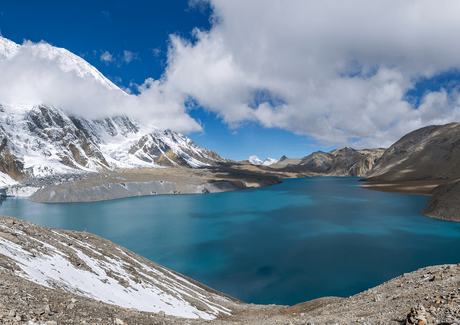 A picture of Tilicho Lake
A picture of Tilicho Lake
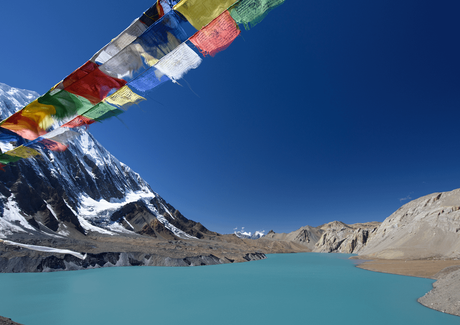 Tilicho lake
Tilicho lake
 Tilicho lake on winter
Tilicho lake on winter
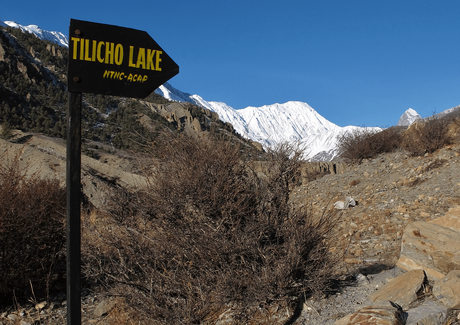 Way to the Tilicho lake
Way to the Tilicho lake
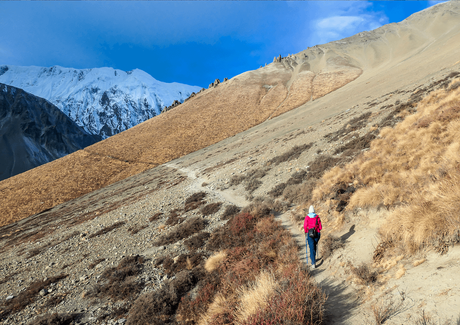 A solo female trekking in Tilicho
A solo female trekking in Tilicho
Real travelers do not live still – they lead a nomadic life throughout their life. It’s not just because of their travel business; they’re itching for an adventure. Traveling is the only solution if you want to explore new places and see amazing things. Trekking is one of the means to get you adventure and provide you with the thrill of the world’s beauty. And the world offers you thousands of destinations to grab the opportunity. Out of them, we’ve found the perfect destination, the Tilicho Lake trek.
This trekking guide will take you on a wild journey to one of the most beautiful lakes in the world. With stunning landscapes and plenty of challenges, this trek is perfect for anyone looking for an adventure.
So what are you waiting for? Let’s get started!
Table Of Content
- Highlights of Tilicho Lake Trek
- Profile Of The Trek
- Overview of the Tilicho Lake Trek
- Detail Itinerary for Tilicho Lake Trek
- Preparing for the Tilicho Lake Trek
- Essential Gear for the Tilicho Lake Trek
- Map of Tilicho Lake Trek
- Pit Stops and Highlights on the Tilicho Lake Trek
- Permit required for Trekking in Tilicho Lake
- Cost Of Trekking In Tilicho Lake
- Best Time To Trek The Tilicho Lake
- Challenges and Risks of the Tilicho Lake Trek
- Tips and Strategies for a Successful Tilicho Lake Trek
Highlights of Tilicho Lake Trek
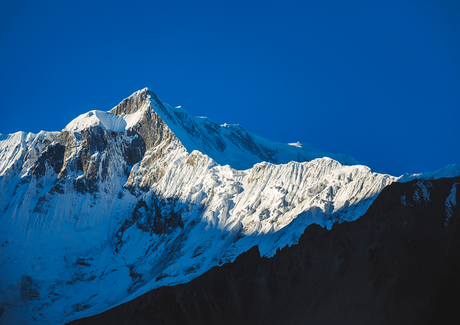
- Besisahar to Tal
- Tal to Thanchok
- Thanchok to Pisang
- Trek from Pisang to Manang
- Manang to Khangsar Trek
- Trek from Khangsar to Tilicho Base Camp
- Tilicho Base Camp to Tilicho Lake and Back to Tilicho Base Camp
- Tilicho Base Camp to Khangsar
- Khangsar to Yak Kharka
- Yak Kharka to Thorong High Camp
- Trek to Muktinath (Via Thorang La Pass)
- Trek to Jomsom
- Jomsom to Pokhara
Profile Of The Trek

NameTilicho Lake
DistrictManang
Development RegionWestern Development Region
ProvinceGandaki
District HeadquartersChame
Distance166 KM from Kathmandu, 7 hrs walk from Khangsar, 55 Km aerial distance from Pokhara
TopographyHigh-Altitude Lake
Altitude4919 m from sea-level
Latitude28° 40′ to 29° 43′ North
Longitude83′ 50° to 93′ 53°
Length3.9 Km
Breadth1.6 Km
Area4.8 sq. Km
Volume155m Liter
Water qualityPure fresh
SourceTilicho, Mesokanto and Idam-Phra Peaks
MountainsTilicho, Nilgiri range, Muktinath Himal, Idam-Phra, Pushen Dada and Annapurna Range
FloraLonicera Spinosa, Oxygraphis, Alpine Buttercup, Alpine Austragulas, Caragina, Prinirose, Primulagentian, Edelweiss etc
FaunaSnow Leopard and Blue Sheep
Avie FaunaHimalayan Snow Cock, Alpine Chough, Demoiselle Crane (Nigatory)
HerbsCordyceps Sinensis, Picrorhiza Scrohpulariflora, Dactylorhizahatagirea, Spikenard etc.
Aquatic OrganismNot recorded yet
ClimateAlpine
Climate ZoneRain Shadow
VegetationAlpine
GlaciarTilicho Glaciar
Profile Of Tilicho LakeOverview of the Tilicho Lake Trek
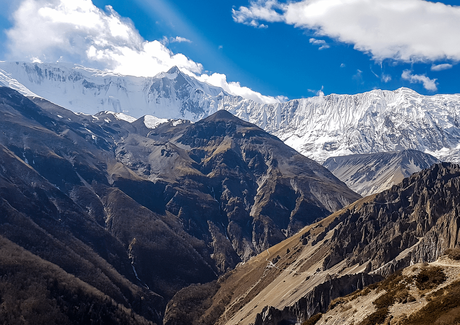
The Tilicho Lake Trek is a hiking expedition that will take you to one of the highest lakes in the world. At 4,919 meters above sea level, Tilicho Lake is a sight to behold. The trekking route also offers stunning views of the Annapurna and Dhaulagiri ranges.
The trek begins at Besisahar, a town in Lamjung. After an initial ascent, your first destination is Tal (1700 m), and Chame is the next. From there, you will hike to Pisang, at 3200 meters altitude. You will then trek to Manang at 3540 meters and kick-off to Khangsar at 3756 meters. In the course of your trip, you will pass across the beautiful villages of Ngawal, Munchi, and Braka. Similarly, the heart-melting views of Mount Annapurna, Gangapurna, Pisang Peak, and Tilicho Peak give you the most thrilling experience.
From Khangsar, your next stop is Tilicho Base Camp and Tilicho Lake. Tilicho Base Camp is the home to yaks and pasturelands – you can reach the camp after crossing the Khangsar River. Tilicho Lake sits at an altitude of 4919m, and its surrounding sloppy landscapes will be risky but adventurous simultaneously.
From there, you will continue to ascend until you reach the summit of Thorong La Pass. Then you make your way to Muktinath, a sacred place for Hindu and Buddhist people. From Muktinath, you will trek to your last destination, Jomsom, from where you will fly back to Pokhara.
The trekking route is 53 kilometers long and usually takes around 12 to 14 days to complete.
Detail Itinerary for Tilicho Lake Trek
Day 1: Besisahar to Tal
The journey will begin in the early morning in Kathmandu (the capital city of Nepal). There we will take a bus and reach Besisahar after 6 to 7 hours. Along the bus ride, you will get some amazing scenery and cross beautiful places such as Boudhanath. From Besisahar we will go on a rough road via a jeep to reach Bulbule. From Bulbule we will start our trek and reach the Tal village and rest for the day.
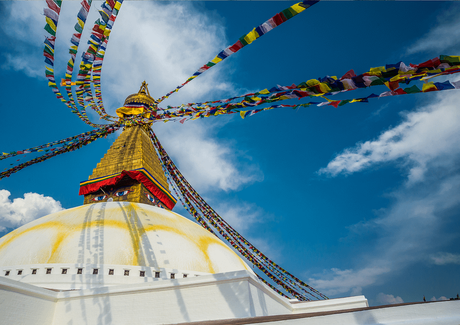

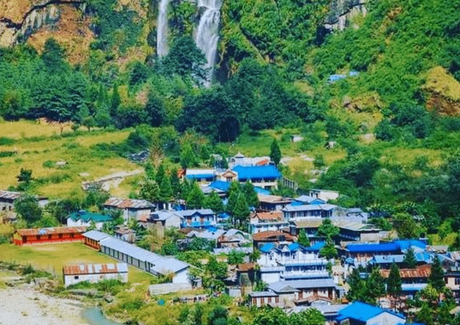
Day 2: Tal to Chame
The next day we will start our trek from Tal and reach the district headquarter of the province Gandaki ‘Chame’. Along the trek to Chame, we will be in the Annapurna region and will be able to see the beautiful Annapurna mountains, cross the Marsyangdi River, and other beautiful villages. Chame is also the place to buy all the necessary items you may need to buy or have to be repaired.
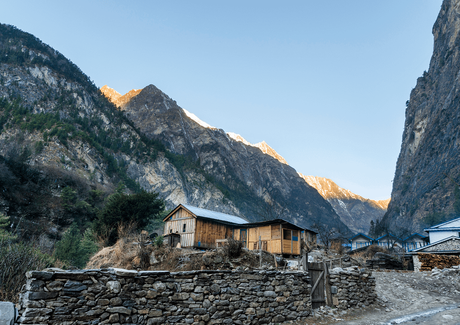
Day 3: Chame to Pisang
From Chame, we will trek through lush green pine forests and walk alongside the Marsyangdi river. We will be able to see one of the biggest Apple farms in Nepal. After a few hours, we will reach Dhikur Pokhari(3060m). From Dhikur Pokhari we will cross a Suspension Bridge and reach a village. There we will rest for some time and then trek to Upper Pisang.
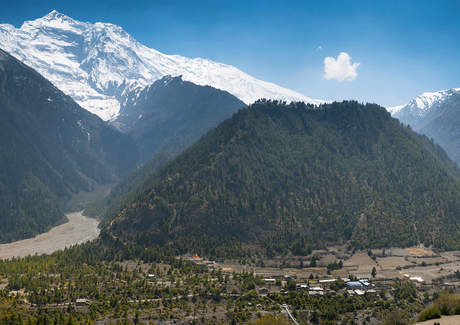
Day 4: Trek from Pisang to Manang
There are two trekking routes from Pisang to reach Manang one way is to go through Ghyaru where there are more climbs and another way is through the southern route with less climbing than the Ghyaru route. Both routes will end up at the same place called Mungji. Along the way, we will be able to see different snow peak such as Tilicho peak, Annapurna Peak, and many others. We will also go through beautiful Tibetan villages, monasteries, and beautiful landscapes. Trekking through all these places after 6-7 hours we will reach our destination for the day at Manang.

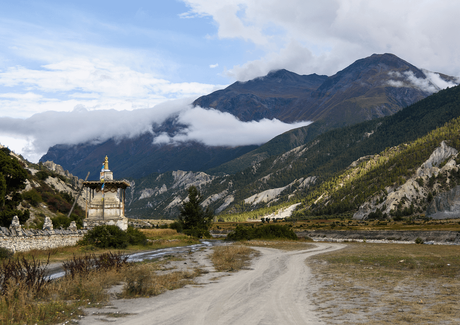
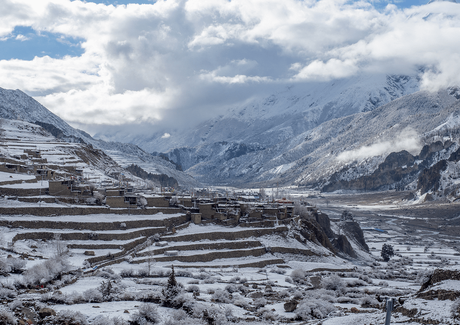
Day 5: Acclimatization Day
Today we will stay on the Manang to Acclimatize ourselves. We will do a short hike around the Manang district, buy necessary things and rest the upcoming day.
Day 6: Manang to Khangsar Trek
Full of energy, we will now begin our trek to reach the Khangsar. Trekking through the alpine forest surrounded by the snow-peaked mountains and then crossing through Kangsar river we will reach the Khangsar village.
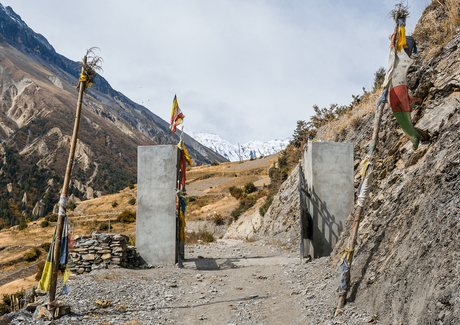
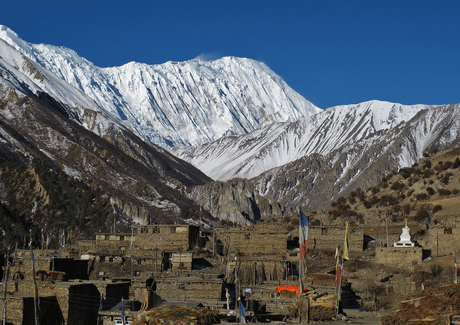
Day 7: Trek from Khangsar to Tilicho Base Camp
Leaving the Khangsar village we will begin our trek. Along the trek, we will be able to see Yak grazing, we can even see the blue sheep. The first part of the trek is quite a climb so we will trek slowly and reach our destination at Tilicho Base Camp. Overnight in a Tent.

Day 8: Tilicho Base Camp to Tilicho Lake and Back to Tilicho Base Camp
Today is the day when we will reach our destination, Tilicho Lake. It’s a steep and hard climb with snow all year round. Along the way, we will be able to see mountains such as Mount Tarkeghyang and Gangapurna. So after a hard climb, we will reach the highest lake in the world Tilicho lake at an altitude of 4919m. After admiring the beautiful lake and its surrounding view we will return back to the Tilicho Base Camp and rest. Overnight on the tent.
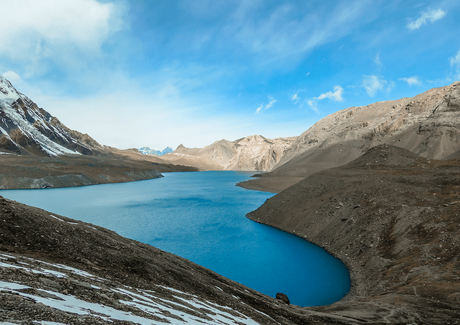
Day 9: Tilicho Base Camp to Khangsar
Now it’s time to return. We will now trek our way back to Khangsar from the same way we came through and then reach Khangsar.
Day 10: Khangsar to Yak Kharka
From Khangsar we will trek to Yak Kharka. Yak Kharka is a small settlement located at an altitude of 4,110 meters (13,484 feet). It is known for its stunning views of the surrounding mountains, including Annapurna II, Annapurna IV, Gangapurna, and Tilicho Peak. While trekking we will see monasteries, and yak grazing and cross the Thorong river and reach Yak Kharka.

Day 11: Yak Kharka to Thorong High Camp
Leaving the Yak Kharka ascending through Ledar and then descending to the trail reaching Thorong Phedi. Along the trail, we will get to see small tea houses where we can rest and have a cup of tea. We will also get a close-up view of Thorong peak and a beautiful landscape. Overnight stay on Thorong High Camp.
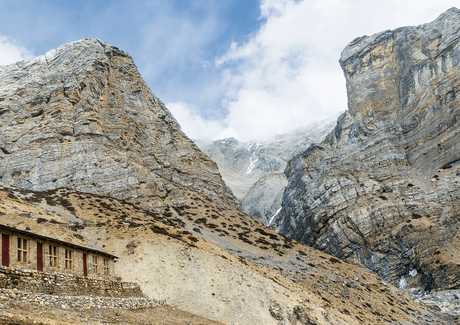
Day 12: Trek to Muktinath (Via Thorang La Pass)
Crossing through one of the highest passes of Nepal the ‘Thorong La Pass’ which lies at an altitude of 5416m. We will reach Muktinath also known as the Mukti Kshetra meaning salvation arena. This one is going to be a tough trek so we have to make sure that we trek slowly, rest along the way and drink plenty of water.
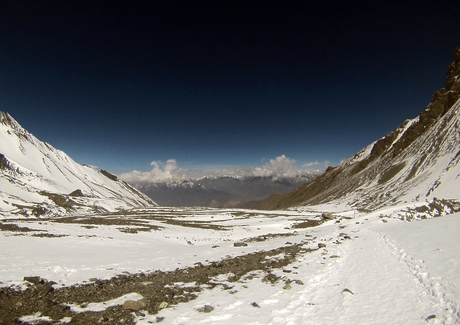
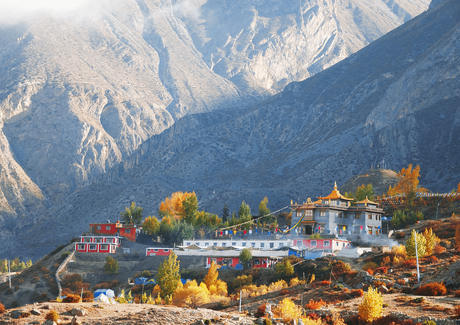
Day 13: Trek to Jomsom
First, we will visit the Muktinath temple and then have some breakfast and then start our trek to reach Jomsom. Along the Kali Gandaki river, we will walk with a beautiful view of Mt Dhaulagiri, villages, and cross many suspension bridges and then reach the Jomsom district. End of the trek.
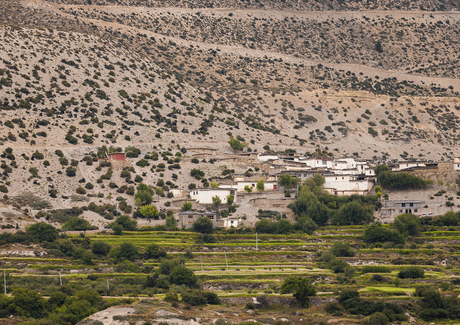
Day 14: Jomsom to Pokhara
Now our trek has ended. We will now go to Pokhara. There are two ways to reach Pokhara first is by taking a flight to Pokhara or via a bus to Pokhara. It’s better to take a flight because the Bus journey is rough and super long. After reaching Pokhara we will stay there and the next day we will go to Kathmandu where you can take a flight or a bus depending on your budget or time. From Kathmandu, you will then depart to your home country.
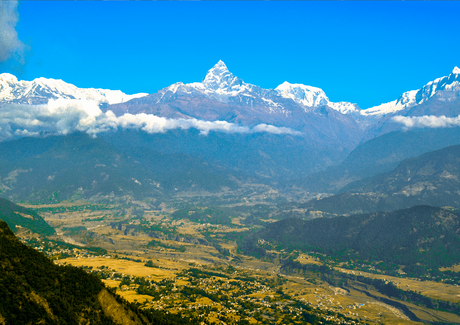
Preparing for the Tilicho Lake Trek
Now that you have all the necessary information, it’s time to start preparing for your trek. While there’s no one right way to do this, here are a few tips to help you get started:
First, ensure you’re physically and mentally prepared for the challenge ahead. Trekking at high altitudes can be strenuous, especially if you need to get used to it. Start by doing some hikes or walks in the weeks leading up to your trek. This will help your body adjust to the altitude and make the journey easier.

Secondly, pack appropriately. You’ll need plenty of clothes for both warm and cold weather, as well as sturdy shoes that can handle a variety of terrain. Don’t forget sunscreen, insect repellent, and a hat to protect you from the sun and bugs. And remember to pack your sense of adventure!
Finally, familiarize yourself with the route before you go. There’s nothing worse than getting lost in the middle of nowhere. Study the map and make sure you know where you’re going at all times.
Essential Gear for the Tilicho Lake Trek
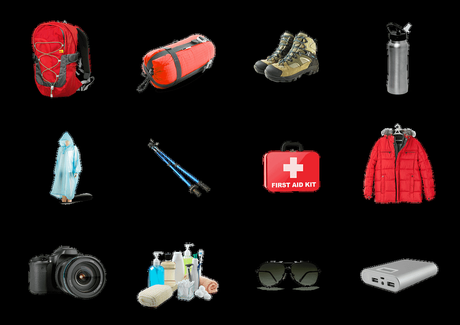
You’ll need a few pieces of essential gear for the Tilicho Lake Trek. Make sure you have a good backpack, sleeping bags, sturdy hiking shoes, water and snacks, and rain gear.
A good backpack is vital—you’ll want something roomy enough to fit all your gear but not too heavy that it becomes a burden. Make sure your shoes are well-worn and waterproof—the terrain can be unpredictable, and you don’t want wet feet for the entire trek. And finally, don’t forget snacks and water—you’ll need the energy to get to the top and want to stay hydrated along the way.
It’s also important to pack wisely. Leave room in your backpack for souvenirs, and be mindful of your weight, so you don’t tire yourself out before you even start the trek.
Map of Tilicho Lake Trek
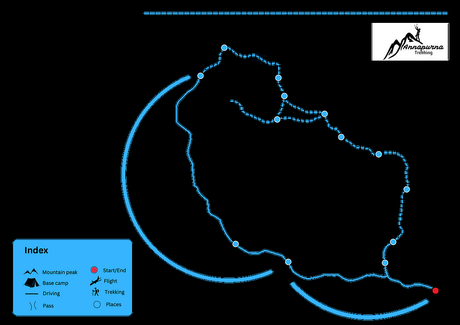
Pit Stops and Highlights on the Tilicho Lake Trek
There are plenty of highlights and pit stops along the way to Tilicho Lake. Here are a few of the most popular ones:
The hot springs at Jomsom
These natural hot springs are the perfect place to relax your muscles after a long day of trekking. The water is said to have healing properties, so don’t hesitate to take a dip!
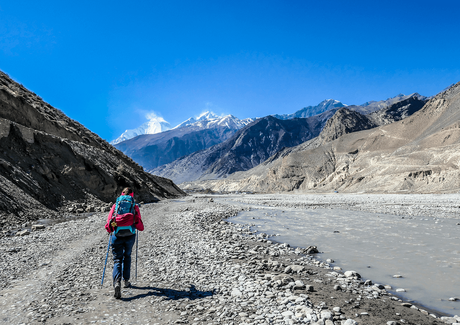
Muktinath Temple
This holy temple is a popular stop for Hindu and Buddhist pilgrims. It’s situated at an altitude of 3,800 meters (12,500 feet), so you’ll feel like you’re on top of the world!
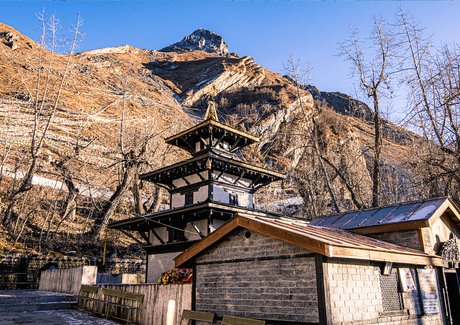
Thorung La Pass
This is the highest point on the Annapurna Circuit Trek, and at an altitude of 5,416 meters (17,769 feet), it’s not for the faint of heart. But trust me, the views from the top are 100% worth it.

Permit required for Trekking in Tilicho Lake
Just like the Annapurna circuit permit, there are two permits that are needed for trekking in Tilicho Lake. They are a TIMS (Trekker Information Management System) card and an ACA (Annapurna Conservation Area) permit. TIMS card will cost around 2000 NRS and ACA will cost around 3000 NRS.
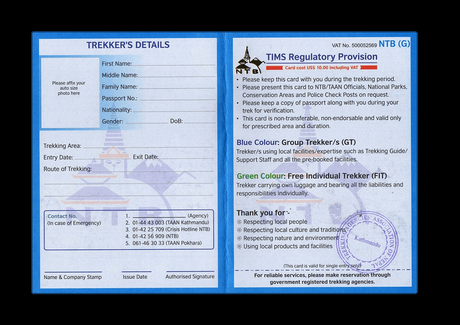
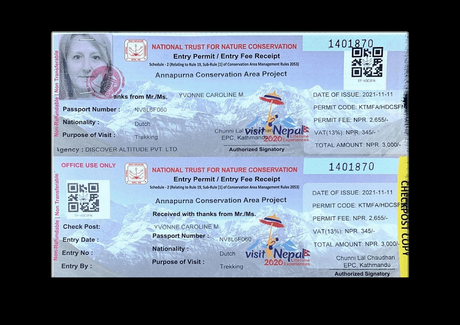
Cost Of Trekking In Tilicho Lake
All the cost that you may end up with while trekking in the Tilicho lake given below:
Flight to Nepal
Prices for flights to Nepal can vary depending on factors such as the time of year, the airline, and how far in advance you book. It is generally a good idea to book your flights as far in advance as possible to get the best price. You may also be able to find discounts or special deals on flights by looking for promotional offers or by being flexible with your travel dates. For reference, the flight ticket from the USA to Nepal generally costs around $2000 to $3000
Visa
The cost of a visa for Nepal depends on the type of visa you are applying for and how long you plan to stay in the country.
Tourist visas are available for visitors who are coming to Nepal for tourism purposes. The cost of a single-entry tourist visa is $30 for a 15-day stay, $50 for a 30-day stay, and $125 for a 90-day stay.
It is important to note that the visa fees are subject to change, so you should check with the Embassy of Nepal or the Department of Immigration in Nepal for the most up-to-date information.
Gear and Equipment
The cost of gear and equipment for trekking in Nepal can vary significantly depending on a number of factors, including the type of trek you are planning to do, the time of year, and the quality and brand of the gear you are purchasing.
For trekking in Tilicho lake, all the gear and equipment assuming you don’t have any can cost anywhere around $300 to $500.
You can often rent or hire gear and equipment in Nepal, which can be a cost-effective option if you do not want to purchase everything yourself. Renting or hiring gear and equipment can also be a good option if you are only planning to do a short trek or if you are not sure if you will be doing more trekking in the future.
The cost of renting or hiring gear and equipment in Nepal can vary, but you can expect to pay anywhere from a few hundred to a few thousand rupees per day, depending on the type of gear you are renting and the length of the rental period.
In general, it is a good idea to do some research and compare prices before purchasing or renting gear and equipment for your trek in Nepal. You may also be able to find discounts or special deals by shopping around or by looking for promotional offers.
Food and water
Food and water while trekking in Tilicho Lake can cost you around $10 to $20 per day and as it is a 14-day trek so around $150-$200 in total
Accommodation
Just like in every other trek of Nepal such as Annapurna trekking assuming you will eat the food in the accommodation you will be staying at. The price of accommodation can be anywhere from $3 to $10 per day. In total around $50 for the whole trek.
Transportation
Vehicle
From Kathmandu to Besi Sahar the bus price will be around $20 to $30 and the jeep price to Bulbule around $10. If you were to take a bus from Jomsom to Pokhara instead of taking a flight it will cost you around $12-$20.
Flight
Prices for flights can vary depending on the time of year, demand, and availability. You can check with individual airlines or online travel agencies to find the best price for your specific travel dates. Generally the flight ticket from Kathmandu to Pokhara is $30 to $50 and the price from Jomsom to Pokhara is anywhere from $100-$150.
Guide and Porter
Guide and Porter job is to guide the trekker, help them, give information about the terrain, mountains, places and carry their bag pack. If you want you can trek without them too. But generally it is advisable to atleast have a guide or a porter. The guide will cost will $20-$25 per day and porter will cost $15-$20 per day.
Insurance
It is a important to purchase travel insurance for your trek in Nepal to protect against any unforeseen circumstances, such as medical emergencies, trip cancellations, or lost or stolen belongings. When looking for travel insurance, you should consider what type of coverage you need based on your specific needs and the activities you will be participating in during your trek.
Some things to consider when purchasing travel insurance for your trek in Nepal include:
Medical coverage
Make sure you have adequate medical coverage for any injuries or illnesses that may occur during your trek. This is especially important if you are planning to participate in high-altitude trekking, as the risk of altitude sickness and other medical emergencies is higher in these areas.
Trip cancellation coverage
If you need to cancel your trek due to unforeseen circumstances, such as a medical emergency or natural disaster, you may be able to recoup some of your costs with trip cancellation coverage.
Lost or stolen belongings coverage: It’s a good idea to have coverage for any valuable items you may bring with you on your trek, such as cameras, electronics, or jewelry.
Emergency evacuation coverage
This type of coverage can be helpful if you need to be evacuated from the trek due to an injury or illness.
There are many travel insurance providers that offer coverage for treks in Nepal, so it’s a good idea to shop around and compare policies to find the one that best meets your needs. It’s also a good idea to read the fine print carefully and understand what is and is not covered under the policy. Generally the insurance will can cost you anwhere from $100 to $1000 depending on the type of insurance.
Total Cost
Visa 15 Days- $30
30 Days- $50
90 Days- $125
GearAround $500 (If you don’t own the gear)
PermitsACA Permit- $25TIMS Permit- $17
Food and waterAround $10 to $20 a day depending on your food choice
AccommodationAround $3 to $10
Transportation$50 to $100
Flight Ticket inside NepalKathmandu to Pokhara: $30to $50
Jomsom to Pokhara: $100 to $150
Insurance$100 to $1000 depending on the type of insurance
Guide$20 to $25
Porter$15 to $20
Hence the total cost for trekking in the Tilicho Lake trek can be around $800-$1500 per person.
Best Time To Trek The Tilicho Lake
Trekking Tilicho all year round is possible but some month of the year the weather can be bad or the trek might become hard and some month it can be pretty crowded. So, if we were to consider all these things the month of March to May or September to November is the best time to trek the Tilicho lake.
Challenges and Risks of the Tilicho Lake Trek
Even though the Tilicho Lake Trek has been gaining popularity, it’s still a relatively challenging and remote trek. As such, there are a few things you should be aware of before undertaking the journey.
First of all, while the trail has been cleared and is well-marked, some sections are still steep and rocky. And, since you’ll be trekking at a high altitude, you can expect cold weather and potentially hazardous conditions, even in the summer months.

Secondly, since Tilicho Lake is off the beaten path, there are limited options for accommodation and food. You’ll need to prepare to rough it and bring your camping gear and supplies.
Finally, while the views from Tilicho Lake are breathtaking, it’s important to remember that this is a natural environment. Be sure to pack out all your trash and follow Leave No Trace principles to help keep this special place beautiful for future generations.
Tips and Strategies for a Successful Tilicho Lake Trek
Here are a few tips and strategies to help make your Tilicho Lake trek a successful one:
- First, start your trek well-rested and with plenty of energy. This trek is not for the faint of heart, and you’ll need all the stamina you can muster.
- Second, take your time. There’s no need to rush; enjoying the scenery is half the fun.
- Third, come prepared. Make sure you have all the necessary gear, including proper clothing and footwear, a map, and enough food and water to last you the entire journey.
- Fourth, be aware of your surroundings at all times. Tilicho Lake is a beautiful but dangerous place, and it’s essential to stay safe.
- Finally, have fun! This is supposed to be an adventure, after all. Embrace everything that Tilicho Lake offers, and you will surely have an unforgettable experience.
All in all, the Tilicho Lake trek is an amazing experience that will leave you with memories to last a lifetime. The region’s natural beauty is awe-inspiring, and the opportunity to see such an unspoiled part of the world is a rare privilege. If you’re looking for an adventure that will take you off the beaten path, this trek is definitely for you.
So if you are looking to book your hike to this grandeur of natural richness, get along with us to plan your trek to Tilicho Lake.
